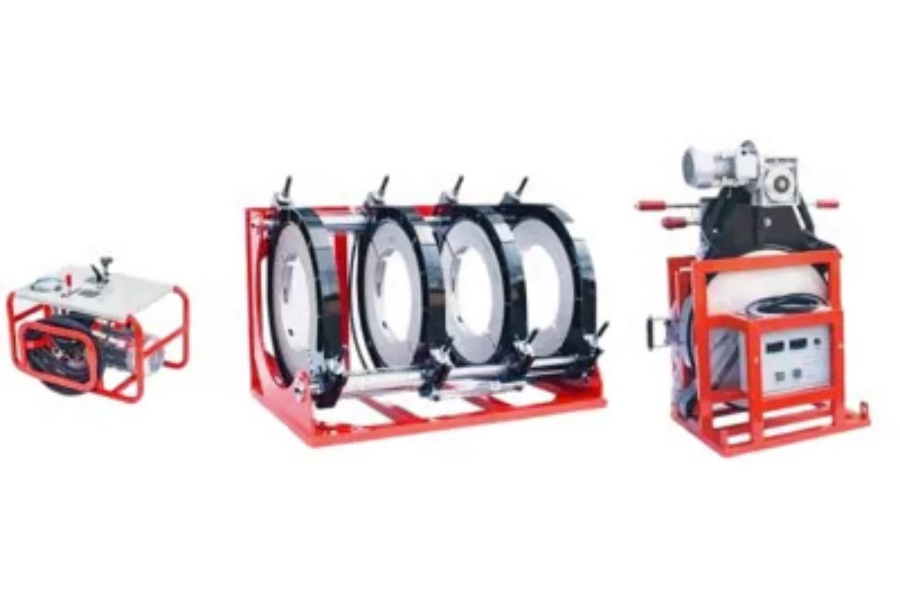The Three Different Types of Welding Machines Explained
If you are in welding, you know there are a variety of machines available to help you accomplish your welding tasks. In this article, we will be discussing the three different types of welding machines and their functionalities in welding.
1. Stick Welding Machines
Stick welding machines, also known as Shielded Metal Arc Welding (SMAW) machines, are one of the most commonly used types of welding machines available today. They are designed to operate with a consumable electrode that is coated in flux to provide a protective gas shield around the weld. Stick welding machines are rugged, reliable, and versatile, making them an ideal choice for a wide range of welding applications in different environments.
2. MIG Welding Machines
Metal Inert Gas (MIG) welding machines use a wire feed mechanism and a shielding gas to create a weld. MIG welding machines are one of the easiest types of welding machines to use and are excellent for welding thin materials, such as sheet metal. They are also known for their speed and efficiency, making them ideal for production line welding applications.
3. TIG Welding Machines
Tungsten Inert Gas (TIG) welding machines are the most versatile and precise type of welding machines used today. These machines use a non-consumable electrode made from tungsten and a shielding gas to create the weld. TIG welding machines are excellent for welding exotic materials and thinner gauge metal because of their precise control of the heat input. Consequently, TIG welding machines are the preferred choice of welders when it comes to welding high-quality and high-performance welding tasks.
4. Which One Should You Choose?
Different welding tasks require different types of welding machines. To select the right type of machine, consider the welding application, the welding material, and the environment under which the welding task will take place. It is always essential to research the various types of welding machines and their characteristics before choosing one.
5. How to Use a Welding Machine?
Learning how to use a welding machine takes time and dedication. You must be able to read and follow the manufacturer's instructions and learn the safety precautions to take. You should also know how to set up the welding machine and determine the appropriate amperage and voltage settings for the welding task at hand. Additionally, regular maintenance and cleaning the welding machine is vital to ensure it works correctly and safely.
6. Essential Features of a Welding Machine
When choosing a welding machine, ensure that it has essential features that will make your welding tasks easier. For instance, the ideal welding machine should have a comfortable grip, easy-to-use controls, and an adjustable heat control. You should also check the welding machine's input voltage and amperage to determine its compatibility with your welding application and the duty cycle to ensure productivity and efficiency.
7. Welding Machine Safety Precautions
When dealing with welding machines, safety should be a priority. You should wear safety glasses, gloves, and a welding helmet whenever welding to protect yourself. Avoid covering yourself with synthetic fabrics that can ignite from sparks or hot spatter. Ensure that the work area is clean and free from clutter to prevent tripping hazards. Additionally, always use the right equipment for the welding task at hand and keep the welding machine away from flammable materials.
8. The Advantages and Disadvantages of Different Welding Types
The different welding types have their advantages and disadvantages. For instance, stick welding machines are rugged, reliable, and versatile. They work well in outdoor environments with wind or rain. However, stick welding machines require more operator skill and produce more spatter than other welding types, which may require more cleanup.
MIG welding machines are easy to use and versatile, making them ideal for production line welding. Still, they may produce poor quality welds with the wrong gas mixtures or voltage settings. Alternatively, TIG welding machines are the most precise and produce high-quality welds. Still, they take time and skill to learn and may require special shielding gas, tungsten electrodes, and additional equipment.
9. Additional Tools for Welding
Along with the three different types of welding machines, additional tools are needed to complete welding tasks. Tools such as clamps, vices, welding tables, and different fittings are critical to getting the job done right. Take time to learn about the various welding tools available and choose the one best suited to your welding task at hand.
10. Conclusion
Knowing the three different types of welding machines available today, what they do, their advantages and disadvantages, and how to use them, is critical to becoming a professional welder. You should always research and get as much information as possible before choosing a welding machine and welding equipment. This will enable you to make an informed decision, choose the right welding machine, and accomplish the task at hand efficiently and safely.

